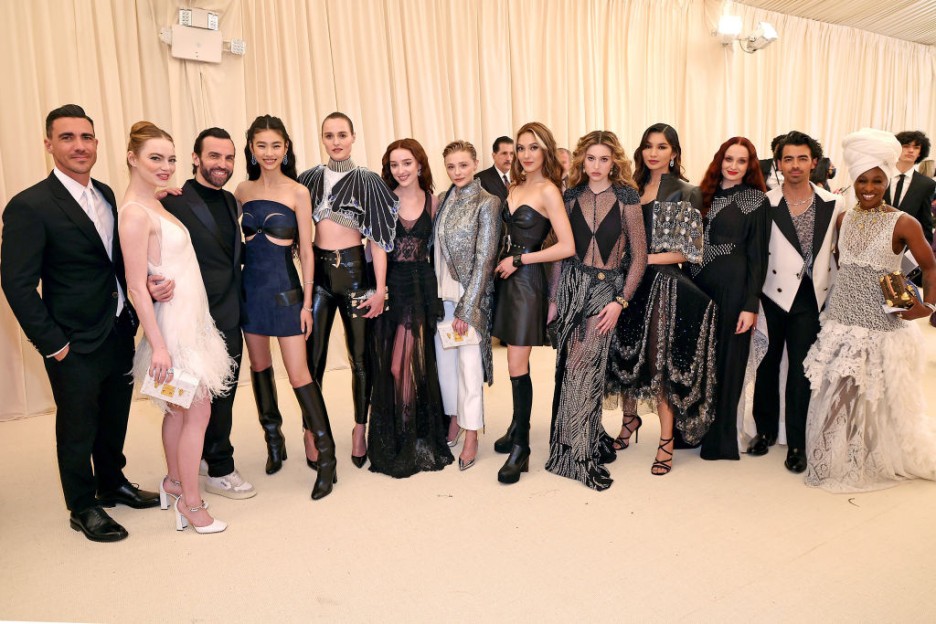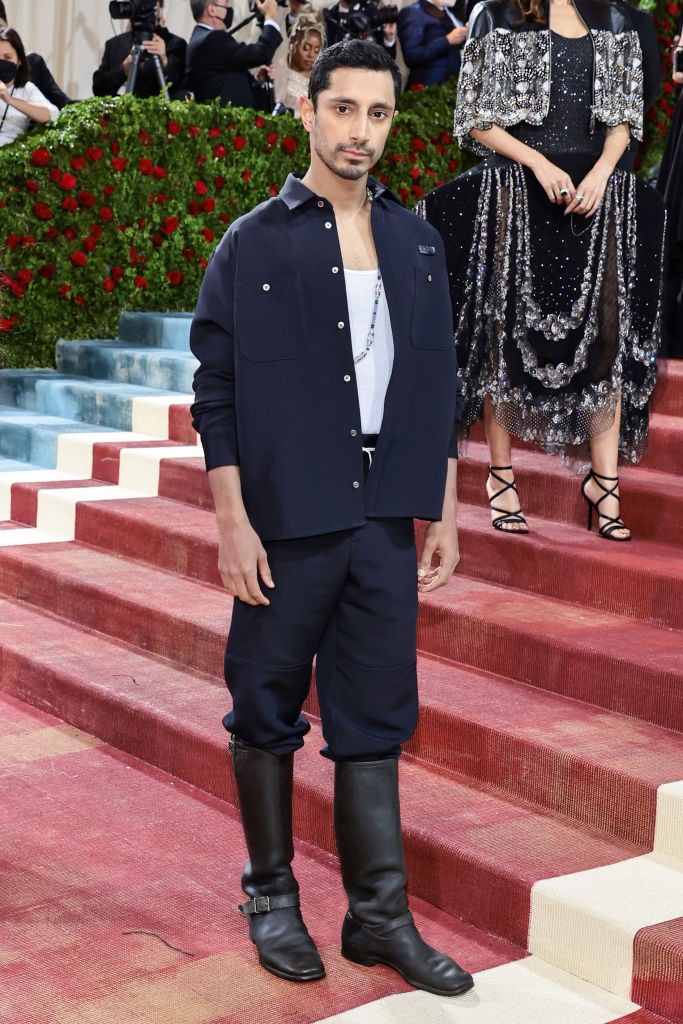My Issue with the 2022 Met Gala: A Missed Opportunity to Celebrate Fashion While Also Acknowledging History

The Met Gala was held last night on May 2, 2022. Often called "fashion's biggest night out," the event is a charity fundraiser for the Metropolitan Museum of Art in New York City, where attendees - approved by Vogue editor-in-chief Anna Wintour - are encouraged to dress according to a theme that corresponds with the exhibit showing at the museum.
Last year's Met Gala, which took place in September, celebrated the In America: A Lexicon of Fashion exhibit. This year, the 2022 Met Gala celebrates the second part of the exhibition, In America: An Anthology of Fashion through its theme: "gilded glamour, white-tie."
If you're confused by what "gilded glamour" might refer to, don't worry. Some of the celebrities themselves seemed to have missed the memo too. According to Vogue's explanation, "gilded glamour" refers to the Gilded Age, a period of rapid economic growth in America that spanned the period between 1870 to 1890.
The Gilded Age was the time of America's first millionaires and billionaires, who amassed their wealth through rapidly expanding infrastructure and advances in technology. You may have heard of them: John D. Rockefeller, Andrew Carnegie, Cornelius Vanderbilt, Henry Clay Frick, and John Jacob Astor, whose names still adorn buildings and institutions to this day. Think of the type of polite society depicted in Edith Wharton's The Age of Innocence.
Due to the economic boom, the fashion of the day was full of opulence, often mixing fabrics and using eye-catching hues that would've have been prohibitively expensive in previous eras. Vogue even points out that "the Audubon Society was founded in 1895 in response to protecting birds from the millinery trade."
So yeah, people went a bit overboard.
All of this seems to pave the way to an array of fabulous fashions for the 2022 Met Gala. Celebrities and fashion designers seeking to recreate the lavishness of the period can really go all out, which could be at turns both aspirational and amusing.
So, why might I have an issue with this?
My Issue with the 2022 Met Gala
Celebrating Opulence in the Time of the Pandemic
Though the CDC's mask mandate for travelers has been struck down and Americans have gradually become more lax with COVID-19 precautions as life returns to "normal," it's tough to say that we're completely out of the woods in terms of the pandemic. In New York City, cases are rising, with nearly 2,500 new cases of COVID-19 a day, fueled by the Omicron BA.2 subvariant and moving the city into medium, or yellow, risk category for virus transmission.
Amid all this, we've also been eagerly anticipating President Joe Biden possibly granting Americans student debt relief, as gas prices are at an all-time high due to the Russian-Ukraine war. All these signs of economic struggle among ordinary Americans make the Gilded Age theme of the Met Gala seem super out of touch and insensitive.
Sure, we know that celebrities don't live lives that resemble ours at all, but it's not great being hit over the head by this fact through the media's hungry coverage of the Gala. You could cite the event's charitable goals, but at the same time, how does this exclusive party benefit ordinary Americans? If all this wealth could be used to better American lives, wouldn't that be an even better use of everyone's time and energy?
Celebrating Fashion without Acknowledging History
Besides celebrating excess in general, we need to also take a closer look at the affluence of the Gilded Age in particular. In the Vogue article we mentioned earlier, outlining their view on "gilded glamour," the time period and its titans were spoken of in glowing terms, such as describing the time as "one of unprecedented prosperity, cultural change, and industrialization, when both skyscrapers and fortunes seemingly arose overnight" and name-dropping the Astors and Vanderbilts as pillars of society.
While Vogue does mention the shadows of economic inequality, it does so with blithe side comments through passing sentences, like, "Wages skyrocketed past those in Europe (although, as Jacob Riis captured in How the Other Half Lives, far from everyone benefited)." Those comments fail to do justice to the scale of the wealth inequality at the time, and the article neglects to mention the true historical context for how those fortunes were made.
Just taking the Astors as an example: though their name adorns Astor Place, Astoria, the iconic Waldorf-Astoria Hotel, and a wing in the New York City Public Library, this is a family that built their millions through the fur trade, smuggling opium into China during the Opium War, and investing in real estate in New York City. These figures are business titans yes, but their dealings were shady and harmful to many.

As a Taiwanese-American, with ancestors from China, seeing a family like this celebrated publicly at such an event is uncomfortable. In fact, it feels akin to celebrating Christopher Columbus, knowing full well how he exploited and enslaved the indigenous populations that he encountered.
For context, opium smugglers like Astor brought drugs into China, a largely self-sufficient country at the time, specifically to get the population addicted, so China would accept something other than silver for Chinese goods that the West coveted, such as tea, silks, and spices. This is a human history at one of its ugliest moments, and yet there's no acknowledgment that we spent a night celebrating the spoils of such shameful business dealings? Did no one look into this?
Thankfully, one celeb seems to have at least given the theme and its possible implications some thought, and that was Riz Ahmed. Coming off his Oscar win for Best Live Action Short Film with The Long Goodbye, Ahmed wore a much more subdued outfit, specifying that his look was "a tribute to the immigrant experience that kept the Gilded Age working."
Born to a family of British-Pakistani immigrants, Ahmed was able to consider "gilded glamour" with a more critical eye, and call out the sugarcoating of the time period that was at play.

How to Fix the 2022 Met Gala
While it's one thing to point out the theme's problematic nature, it's another to not offer any solutions. Here are some ideas I had about how this whole situation could've been handled with more nuance and critical thought.
Treat the Gala as a Museum
This idea might sound a bit ironic, considering how the event is a charity event for a museum. Perhaps this is why I'm disappointed that this approach wasn't thought up by the event in the first place.
When I say that the Gala should've been treated as a Museum, I mean that celebrities and designers can rejoice in the fashion of the Gilded Age, but they should also be responsible for providing some context for where those fashions came from - à la those little plaques next to exhibits in museums. That way, museum-goers can appreciate the art while also understanding the artist's influences.
In practice, this could mean that when Vogue writes up a fluff piece to explain their own event, they also go into some of the history of the figures they're honoring and take an appropriately measured tone when speaking of them.
For example: Yes, Thomas Edison brought us the lightbulb, but did you know that he was also a thug who would send people to shoot up your film camera if you used anything other than Kodak film, a company his cameras had partnered up at the time?
See? Nuance!
Celebrities and their teams could also acknowledge the historical ugliness by incorporating it into their outfit designs - whether that's through Ahmed's direct approach or a more metaphorical one. I, myself, would've loved to see a dress using silks that had the silhouette of a Gilded Age dress, with its corseted bodice and elaborate skirts, but also incorporate Chinese stitching or designs as a nod to where the fabric came from. Get creative! Isn't that what designers are supposed to do?
Highlight Critical Takes on the Theme Along with Uncritical Ones
I understand that the Met Gala celebrates the ostentatious. We're often on the look-out for the wildest costumes and which celebrities actually stuck to the theme. However, another way to subtly provide historical context is to elevate the looks that may not slot neatly into the most conventional interpretation of the theme.
By giving these looks the space to shine, it may also encourage designers and celebrities to pursue this more critical approach, too. Celebrities whose images project progressiveness could then use the Met Gala as a way to further their brands, like how Alexandria Ocasio-Cortez wore a dress emblazoned with "Tax the Rich" to the 2021 Met Gala.
While Vogue may feel uneasy about critical takes at their event, being open to it encourages discourse and prompts engagement from the public. Taking this stance in the future would position Vogue and the Met Gala as thought leaders, and make it clear that they don't only concern themselves with high fashion.
In a rapidly globalizing world, it may be the best way for both Vogue and the Met Gala to remain relevant for years to come.
For more entertainment news and commentary, check out Enstarz! We bring you the latest on your favorite celebrities, TV shows, and films.






